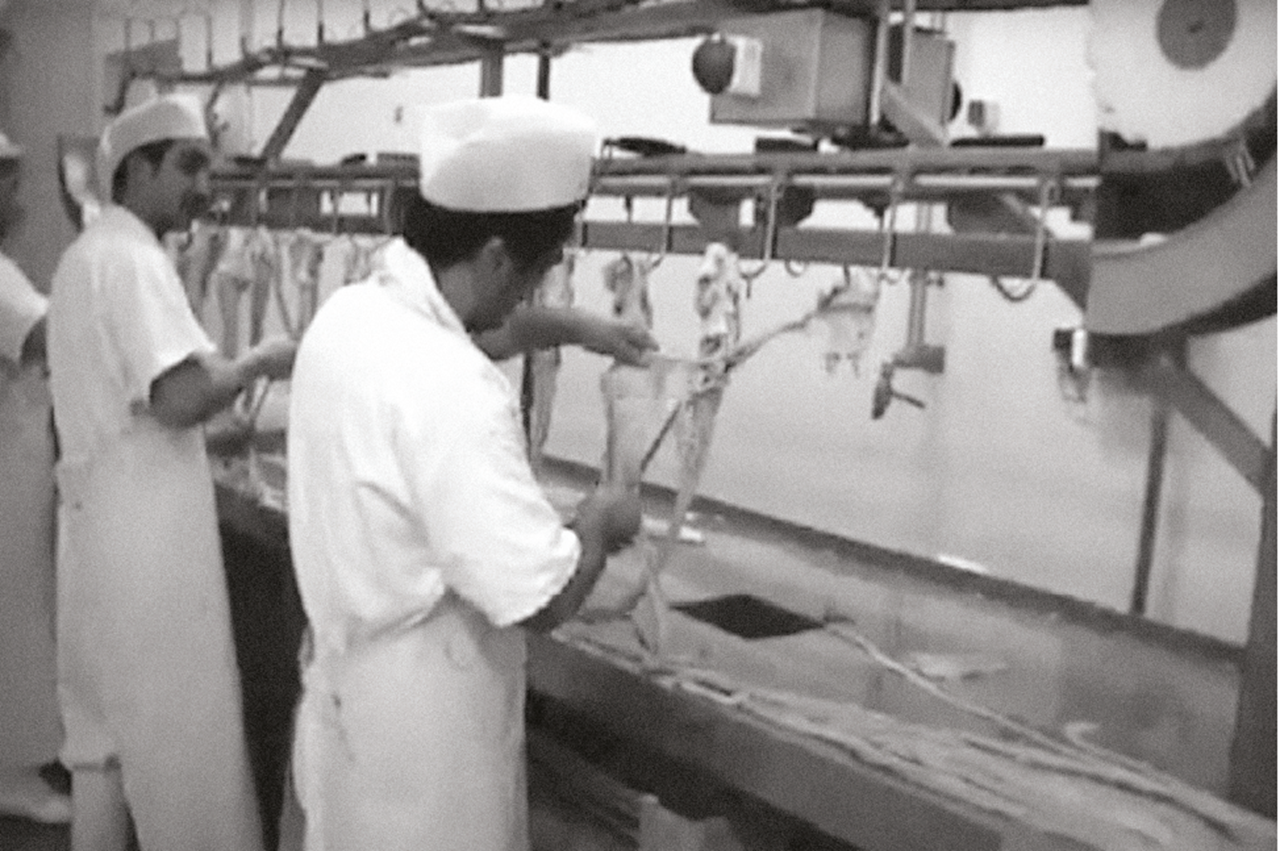
1980
Gerrit Strookappe and Thomas de Winter are seasoned gutroom professionals. They both joined the profession early in their lives. Thomas rolled out of the cradle into the gutroom while Gerrit joined his neighbor as a teenager. They talk about the difference between then and now. In 1980 the gutroom looked very different. Then, 50 animals were slaughtered per hour compared to 650 today. You alone were responsible for an entire bowel package. In many gutrooms, they used to have a scythe attached to the wall to cut stomachs open. There were hardly any machines. In those days you virtually “lived” in the slaughterhouse. Sometimes you would change clothes behind your car which doubled as a dining hall. There was little attention to hygiene. “At the end of the week your apron would stand on its own on the fl oor,” says Gerrit. In those days the pancreas was the most important organ because of the insulin while stomachs were used for animal food. Today these organs are valued in the exact opposite way. Even mucosa was not being harvested in the gutroom itself.

2020
Everything is different now. In terms of speed and automation but also with regard to professionalization. We have better equipment; there is more attention to hygiene, safety and ergonomics. Because of their experience, both Gerrit and Thomas are involved in innovation through the Gutroom Competence Center. There, new ideas are being tested and new instruments are developed such as a special knife to gut casings without the feared holes and beards. “Oh, and we have better terminology,” says Thomas, “We call a bowel package the fifth quarter.” Both men chuckle. One thing is for sure: innovation cannot happen without collaboration and mutual inspiration.